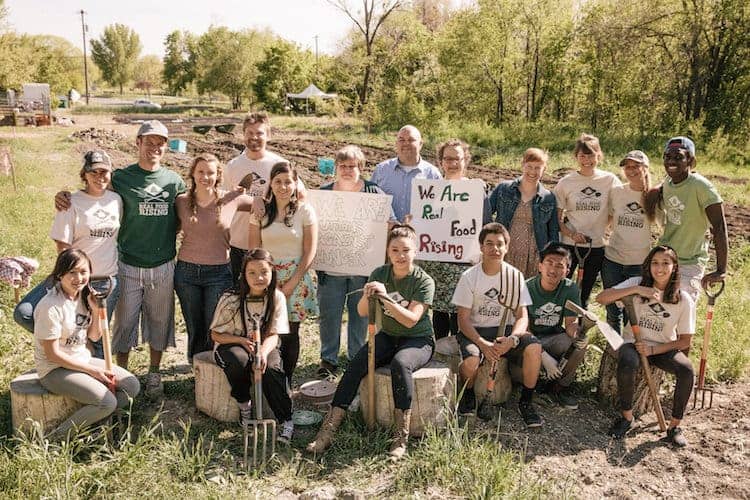Utahns Against Hunger (UAH) has been working since 1981 to create the political and public will to end hunger. UAH works to shape public policy and implement and expand nutrition programs to reach a greater number of households. Their programs focus on improving access to sustainably grown produce and youth development through hands-on education opportunities.
Food Tank had the opportunity to speak with Gina Cornia, Director of Utahns Against Hunger.
Food Tank (FT): How do you contribute to creating a better food system?
Gina Cornia (GC): Utahns Against Hunger works on the state and federal level to ensure that low-income Utahns have access to federal nutrition programs by working directly with program administrators and elected officials. We also have an urban farm youth development program, Real Food Rising, which hires and teaches high school youth about the environment, work, leadership, food insecurity, and hunger. Food produced from the farm is donated to emergency food providers, and sold to local restaurants and at a farm stand in a low-income neighborhood where customers can use their SNAP benefits.
UAH is a founding member of the Salt Lake City Food Policy Task Force, which addresses and makes recommendations to the Mayor’s Office regarding food policy and system issues.
FT: What is a project, program, or result you are most proud of? Please explain.
GC: For nearly 40 years UAH has been working in communities throughout the state to make sure federal programs remain accessible for all those entitled to them and has been working to expand these programs.
Most recently we have been funding farmers markets in order for them to accept SNAP payments. UAH has funded 14 markets to date, and UAH was recently awarded a two-year Food Insecurity Nutrition Incentive grant from the U.S. Department of Agriculture (USDA), which will enable us to provide matching/incentive funds to the 21 markets that accept SNAP payments.
FT: What are your goals for 2015 and beyond?
GC: We plan to implement Double Up Utah at 21 farmers markets throughout the state and secure funding for long-term sustainability of the program. We are working to increase food production on our farm, serve up to 40 youth in 2015, and increase our sales to restaurants and farm stands. We also plan to work with national partners on Child Nutrition Reauthorization, and continue our work in making sure policies that drive federal nutrition programs keep them accessible and funded for low-income, working households.
FT: In one sentence, what is the most important thing eaters and consumers can do today to support a more sustainable food system?
GC: Vote for local, state, and federal candidates who support the kinds of land use policy, water policy, planning, and programs that make our food system more fair, just, and sustainable.
FT: How can individuals become more involved in your organization?
GC: Individuals and groups can volunteer on the farm, as well as volunteer to help enroll people in food stamps, help with office tasks, and participate in outreach activities.
Download the 2014 Good Food Org Guide HERE.
Submit your suggestions for the 2015 guide HERE.













